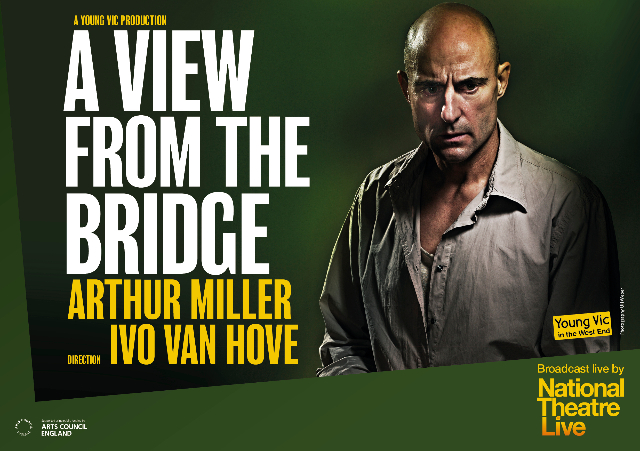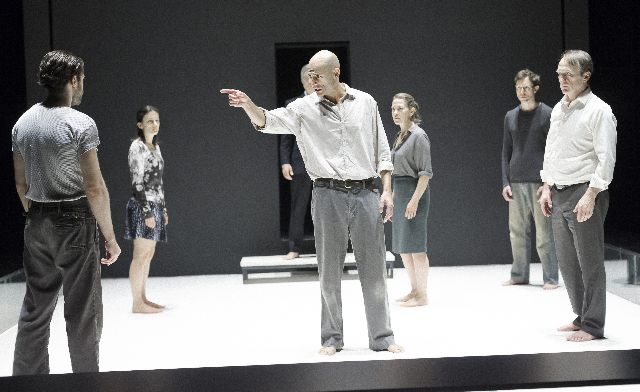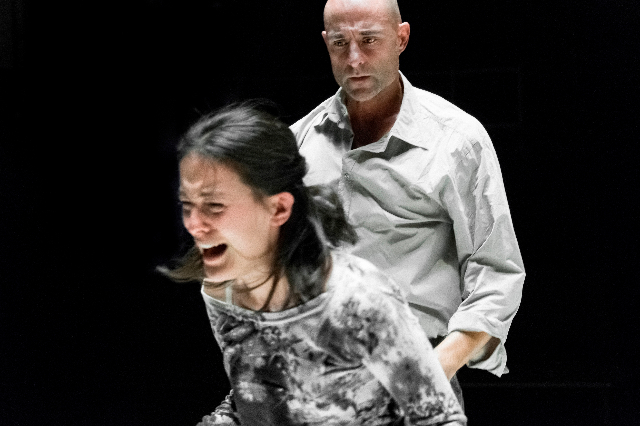Ivo Van Hove Meets Arthur Miller
Stark, Timeless Setting Sets Emotional Wallup
By: Susan Hall - Mar 08, 2016
A View from the Bridge
By Arthur Miller
Directed by Ivo Van Hove
Lyceum Theatre
New York, New York
Actors' physical expression of emotion engages an audience viscerally. Ivo Van Hove does playwright Arthur Miller a big favor.
By heading for the heart of the matter, its pulsing emotions and the blood-red taint of classic Greek incest, he makes View from the Bridge vibrate. No longer are we tethered by didactic references to ratting before the House Un-American Activities Committee. There are no attacks on Elia Kazan who named names and with whom Miller had collaborated on The Hook, a never-produced feature film which Kazan would develop into On the Waterfront, and Miller into View.
The subject of immigration immediately catches our attention. The world-wide crisis caused by the war in Syria is front page news. Yet, before we listen to WOPs (stands for 'With-Out Passport'), we have a indelible visual.
On stage, the audience is seated stage left and stage right in steeply raked seats. We in the audience facing the stage almost complete the circle. We could be in a amphitheatre in ancient Rhodes.
Miller was interested in Greek tragedy before Ibsen caught his attention. He liked the way the Greeks intertwined personal psychology with social matters. The weakness of View comes from didactic references to society. Its strength, as van Hove makes clear, is in unleashing an individual's emotional makeup. Eddie Carbone is a character whose fate is pre-destined. We hurtle toward his end as the one arc play crescendos.
Other elements of Greek drama are immediately thrust forward. Instead of using Miller's opening, a toss game against a city wall, van Hove has Carbone and a fellow worker taking a shower. Why has the director made this change?
Quite a different sexual suggestion is lofted when Carbone's niece wraps her legs around Carbone in a leap which appears not at all innocent. We immediately imagine genitals touching. Catherine is still naive. Carbone lusts after her. While his lust is not consummated, the director suggests that it occupies Carbone compulsively.
Toward the end of the play, Carbone walks in on Catherine and her cousin, whose lust is clearly consummated. Their leg to chest embrace echoes the one Eddie imagined at the play's opening.
In this View, we are in the heart of darkness, with incest swirling around us. We are living in the depth of emotions like Greek tragedy, yes.
Van Hove's emotionally intense direction, and the riveting acting of Mark Strong as Eddie, are further heightened by the set and costume choices. The box at stage center where the action takes place is stripped down with no color, no furniture. The costumes are also in timeless greys. The play is ousted from time, and placed in universal emotions. By taking our over-saturated eyes away from the set, instead focusing on feelings, View from the Bridge is striking and revealing.
Two kisses occur before the denouement. Eddie kisses Catherine, who pushes him off. Then he kisses her cousin Rodolfo, who she proposes to marry. Both kisses are in Miller's script. Their emotional intensity in this production makes them shocking. What happens after the prohibited kisses is now foreordained. This is a brilliant production.




